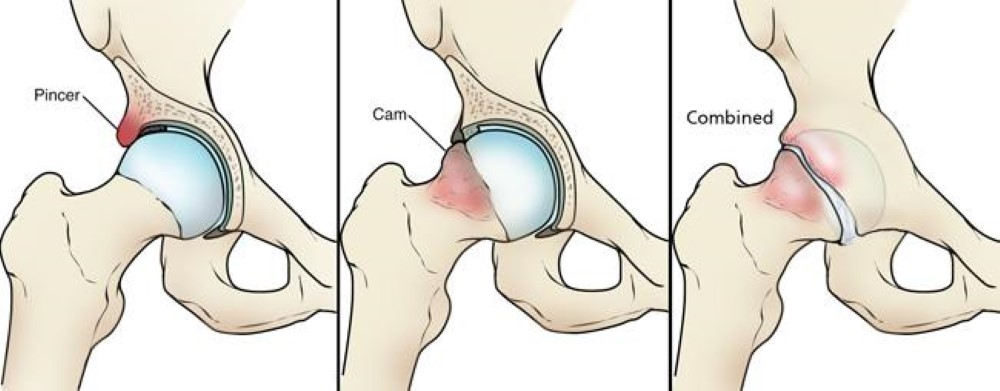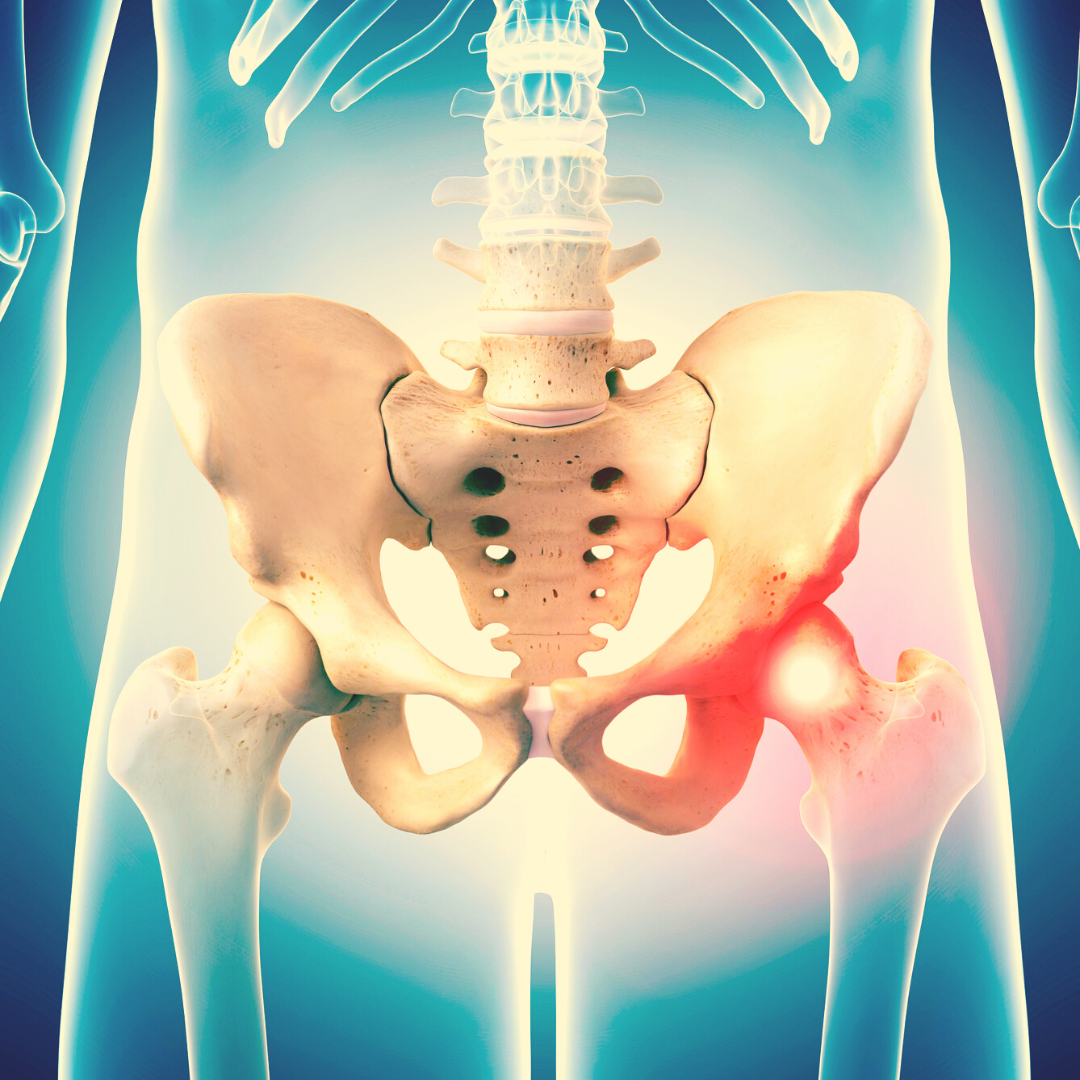Figuring Out Hip Pain

Have you ever had hip pain?
Maybe you’ve felt pain on the outside or inside of your hip in the morning or after you’ve been sitting for long periods of time. Maybe you feel pain really deep in your hip joint, or some kind of pinching sensation. Regardless of what kind of hip pain you may be having, it can be frustrating, and maybe even debilitating.
Let me give you a little bit of my background to tell you that I’ve been there, and I know just how much physical therapy can help. I played Division I lacrosse in college and when I was a junior, I had hip surgery to repair a torn labrum. Before I went to see a physician to get my official diagnosis and decide on a surgical repair, I had terrible hip pain for about three months. I had a lot of pain very deep in my hip joint and down into my groin that was worse if I stood or sat for too long. My hips were always extremely stiff, and I felt very unsteady on that side and unstable through that hip. When I finally got imaging done, the doctor told me I had FAI (femoroacetabular impingement), which had probably led to my hip labral tear. All of these big words didn’t mean much to me at the time, except that I was going to need surgery to fix it.
Fast forward to the following year and I was STILL having pretty severe hip pain. I went back to the doctor, found out I had torn my other labrum, and that I had more serious structural issues in my hips that were going to keep causing hip pain throughout my lifetime if they weren’t addressed. I was devastated. I was a senior in college about to play my last season of lacrosse ever, and I had no idea if I was going to make it through. After a lot of conversations with medical professionals, my family, and doing some research myself, I made the decision to not pursue surgical options, and instead see a physical therapist.
Jump ahead again to spring semester and my final season of lacrosse… I made it. I was back on the field, with much less hip pain and discomfort. I worked really hard with my physical therapist to get stronger and return to play the right way.
Now, I don’t have hip pain! Yes, I still have the same issues with my hips as I did before, but I have kept up with a lot of my rehab exercises to keep my pain at bay.
So, now you’re probably wondering, what is causing my hip pain, and how do I get rid of it??
Let’s dive into some possible causes of hip pain, starting with where you’re feeling it:
Pain on the Outside of the Hip:
When clients come in complaining of hip pain that is on the outside of their hip, 9 times out of 10 this actually rules out any significant issues coming from the hip joint itself. So if it isn’t the hip joint, what could it be?
- Gluteal Tendinopathy: Just like you can have patellar tendinopathy (jumper’s knee) or achilles tendinopathy, you can have tendon pain in your gluteal tendons. This condition is very common in runners and overuse situations, and responds very well to exercise progressions and activity modifications.
- Hip Bursitis: Almost all of your major joints and tendons have a bursa, which is a fluid filled sack that helps the tendons slide and move. If this bursa gets inflamed, it can cause discomfort and inflammation.
- Greater Trochanteric Pain Syndrome: This is just a string of really big words that describe pain on the outside of your hip because of degenerative changes affecting the gluteal tendons and bursa. The development of this syndrome isn’t very well understood.
Pain on the inside of the hip/groin:
- Weak Groin (Adductor) Muscles/Adductor Muscle Strain: This is a very underappreciated muscle group, but is so important in sprinting, kicking, and any change of direction movement. It needs to lengthen and shorten quickly through a wide range of motion. We often find athletes with groin pain have weak adductors. If you have strained one of these muscles, you will usually experience a sudden onset of pain during a specific activity. The pain is described as severe and is located in the groin region or inner thigh that gets worse with activity.
- Weak Hip Flexors/Hip Flexor Muscle Strain: Your hip flexor comes across the front of your hip and can often feel like groin pain. When your hip flexors are weak, they usually feel very tight because your body has increased the resting tone in the muscle to keep the joint out of a range of motion that you do not have good, active control over. If this is the issue causing your hip pain, you will usually have worse pain when you lift your thigh towards your chest, discomfort when stretching your hip flexors, and tenderness when you push on your hip flexor/the front of your hip.
- Hip Joint Pathologies: Having hip arthritis, a labral injury, or hip impingement can often present with pain and possibly an intense pinching sensation in the groin.
Now, let’s dive a little deeper into a few specific diagnoses…
Femoroacetabular Impingement (FAI):
Pain from FAI is caused by a dysfunction between the head of the femur (ball) and the acetabulum (socket) of the pelvis in the ball-and-socket joint of the hip. And it comes in 3 types…
- Pincer type: This is when the acetabulum covers up too much of the femur. This causes the two bones to hit each other too early in the same repetitive hip movements and pinches the labrum of the hip.
- Cam type: This type involves the head of the femur becoming less round and damaging the cartilage of the acetabulum with certain repetitive hip movements. It is often seen in the general population but is even more common in the athletic population.
- Mixed/Combined type: This is the most common type that involves a combination of the acetabulum covering too much of the femur and the head of the femur having an abnormal shape.

FAI can present itself as tightness in the hip flexors and reduced mobility, especially when bringing your knee to your chest, combined with crossing your leg over your body or rotating your toes inward. Pain is usually described as “sharp” and can be associated with clicking that you can feel or hear. Pain is typically present with activities like sitting, standing up, or bending forward.
Hip Osteoarthritis (OA):
Also known as “wear and tear” arthritis, OA is a chronic condition caused by the breakdown of the cartilage, which cushions our joints. This breakdown causes the bones to rub together, leading to pain, loss of movement, and a lot of stiffness that is worse after periods of inactivity. Pain from hip osteoarthritis is often felt in the groin area and front of the thigh.
Snapping Hip Syndrome:
Individuals usually describe feeling their hip “snap” when they perform certain exercises, such as lowering their legs with core exercises, kicking or leg lifting motions, or running. This sensation is often caused by the hip flexor rolling over the front of your hip bone. This typically occurs when the hip flexors are overused, become fatigued or irritated, or it can be a result of decreased core and hip strength, which causes an imbalance of forces that control the hip.
Now What?
Now that you have all this information about what could possibly be going on in and around your hip joint, what should you do about it?
Here at Kinetic Sports Medicine and Performance, we work with individuals that are experiencing hip pain on a regular basis! Based on our evaluation, we’ll be able to figure out what the major cause of your hip pain is, and how to address it. Most of these scenarios require a slightly different course of action, but it is important to address your movement, range of motion, and strength to develop the right plan of action for you! Schedule your free injury screening with us to help you begin your path to pain free hips!
